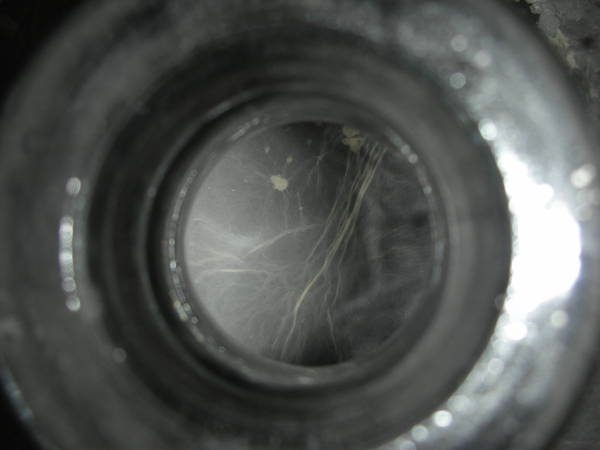bigljd
Well-Known Member
I brewed something similar to Fullers London Brown Porter a while ago and really love the taste of it. Today I was reading the BJCP descriptions of Brown Porters and noticed that historically they may have used Brett:
From BJCP 12A:
"Comments: Differs from a robust porter in that it usually has softer, sweeter and more caramelly flavors, lower gravities, and usually less alcohol. More substance and roast than a brown ale. Higher in gravity than a dark mild. Some versions are fermented with lager yeast. Balance tends toward malt more than hops. Usually has an “English” character. Historical versions with Brettanomyces, sourness, or smokiness should be entered in the Specialty Beer category (23). "
Has anyone tried this style with Brett, and what Brett did you use? What flavors did you get, and did it get sour?
I'd like to try a 10 gal batch of the brown porter this winter and split them into 2 - 5 gal batches. I'd ferment them both with WLP002 (I love that yeast). Then I'd try making my first Brett beer by adding Brett to 1 of the batches and aging it for a while.
Is there any info out there on how brown porters were made historically, and how the Brett was used?
JAN 16 2012 EDIT:
To make it easier to find, here's the recipe I ended up using for this brew. I kegged 5 gal of it after fermentation was complete, and the other 5 gal is in a glass carboy with Brett C where it will remain there for a few more months. The actual SG for me was 1.061 and the FG was 1.017 (I got higher than expected efficiency). Considering the higher gravity and ABV I had and the roasty, coffee finish I'm tasting I think this probably would fall into the Robust porter class instead of a Brown porter.
11 gal 80% Eff.
OG 1.057
FG 1.014
IBUs 36
SRM 27
17 lbs Maris Otter (Muntons) (3.5 SRM) Grain 5 81.0 %
3 lbs Brown Malt - Home Oven Toasted maris otter (375 degrees in oven for 45 minutes) (65.0 SRM) Grain 6 14.3 %
1 lbs Black Patent(Muntons) (500.0 SRM) Grain 7 4.8 %
3.00 oz Goldings, East Kent [5.90 %] - Boil 60.0 min Hop 8 26.7 IBUs
2.00 oz Goldings, East Kent [5.90 %] - Boil 15.0 min Hop 9 8.8 IBUs
1.0 pkg London Ale III (Wyeast Labs #1318) [124.21 ml] Yeast 12 -
1.0 pkg Brettanomyces Claussenii (White Labs #WLP645) [50.28 ml] [Add to Secondary]
Mash temp 154
Ferment at 68
Add Brett to 5 gal in secondary
Here's what the brew looks like - it's a tasty one. The London Ale III yeast left a pleasant, full bodied brew with smooth and a slightly dry coffee finish comes from the black patent. I plan to enter into a March competition, so I'll report back on the results:

From BJCP 12A:
"Comments: Differs from a robust porter in that it usually has softer, sweeter and more caramelly flavors, lower gravities, and usually less alcohol. More substance and roast than a brown ale. Higher in gravity than a dark mild. Some versions are fermented with lager yeast. Balance tends toward malt more than hops. Usually has an “English” character. Historical versions with Brettanomyces, sourness, or smokiness should be entered in the Specialty Beer category (23). "
Has anyone tried this style with Brett, and what Brett did you use? What flavors did you get, and did it get sour?
I'd like to try a 10 gal batch of the brown porter this winter and split them into 2 - 5 gal batches. I'd ferment them both with WLP002 (I love that yeast). Then I'd try making my first Brett beer by adding Brett to 1 of the batches and aging it for a while.
Is there any info out there on how brown porters were made historically, and how the Brett was used?
JAN 16 2012 EDIT:
To make it easier to find, here's the recipe I ended up using for this brew. I kegged 5 gal of it after fermentation was complete, and the other 5 gal is in a glass carboy with Brett C where it will remain there for a few more months. The actual SG for me was 1.061 and the FG was 1.017 (I got higher than expected efficiency). Considering the higher gravity and ABV I had and the roasty, coffee finish I'm tasting I think this probably would fall into the Robust porter class instead of a Brown porter.
11 gal 80% Eff.
OG 1.057
FG 1.014
IBUs 36
SRM 27
17 lbs Maris Otter (Muntons) (3.5 SRM) Grain 5 81.0 %
3 lbs Brown Malt - Home Oven Toasted maris otter (375 degrees in oven for 45 minutes) (65.0 SRM) Grain 6 14.3 %
1 lbs Black Patent(Muntons) (500.0 SRM) Grain 7 4.8 %
3.00 oz Goldings, East Kent [5.90 %] - Boil 60.0 min Hop 8 26.7 IBUs
2.00 oz Goldings, East Kent [5.90 %] - Boil 15.0 min Hop 9 8.8 IBUs
1.0 pkg London Ale III (Wyeast Labs #1318) [124.21 ml] Yeast 12 -
1.0 pkg Brettanomyces Claussenii (White Labs #WLP645) [50.28 ml] [Add to Secondary]
Mash temp 154
Ferment at 68
Add Brett to 5 gal in secondary
Here's what the brew looks like - it's a tasty one. The London Ale III yeast left a pleasant, full bodied brew with smooth and a slightly dry coffee finish comes from the black patent. I plan to enter into a March competition, so I'll report back on the results:









